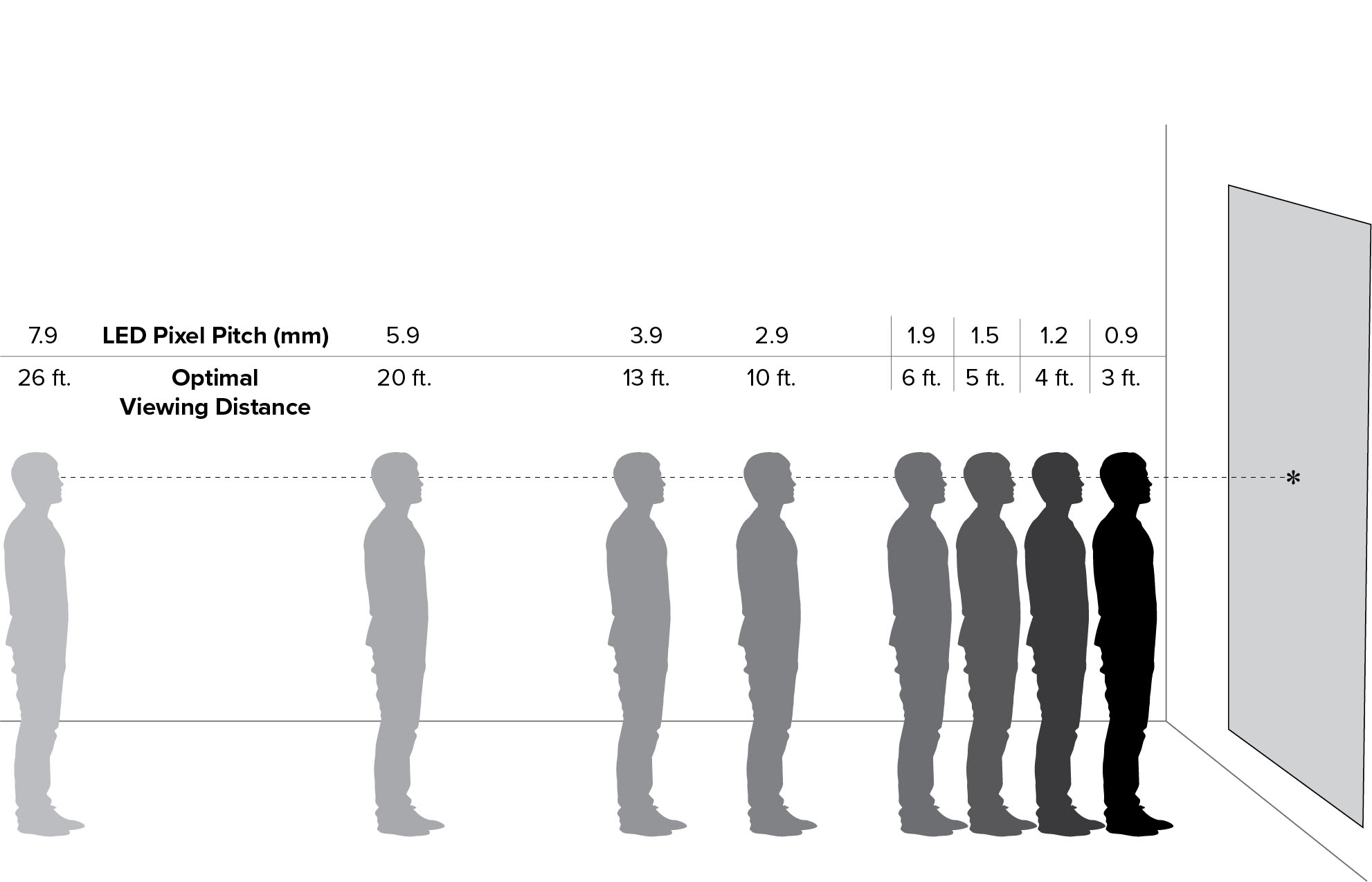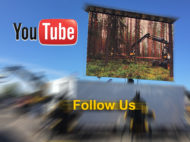LED Lessons: What is Pixel Pitch? And How Does it Relate to Screen Resolution?
- Indoor Event
- Published on Tuesday, 08 December 2020 09:15
- Fire Up Video
- 0 Comments
 What is Pixel Pitch?
What is Pixel Pitch?
Pixel pitch is a term in the LED screen industry that helps describe the distance between LED pixels. It tells the distance (in millimeters) between the center of one LED bulb or cluster to the center of the adjacent cluster. Simply, it is the gap between LEDs, or the blank space visible between the two bulbs next to each other. It is also referred to as pitch, dot pitch, or others, and correlates to resolution, but is not the same thing. More on that below.
One simplified way to think of pixel pitch is similar to Dots Per Inch, or DPI. Most commonly used for print media, as well as video, DPI refers to the number of different dots in a square inch to make up an image. The more DPI, the better the image looks. Although this is not a perfect comparison, this is very roughly the way you can think of pixel pitch. But again, this is just to help understand the idea, not an exact similarity.
Smaller is Better (?)
A smaller pixel pitch will give you a better image. The smaller the gap, the better the video wall will look. There is less empty space, and more pixels make up a single space, giving you a better resolution. Fine details will be easier to see, and there will be crisp lines with more pixels making up an image. So you should always get the smallest pixel pitch LED screen possible, right? Well, not exactly. It depends on the application, your budget, and viewing distance…

Viewing Distance
Pixel pitch also affects viewing distance. The closer you get to an LED wall, the more you will be able to see the individual pixels and gaps between, and the image gets worse. For each screen, there is an optimal viewing distance where the screen looks best, and moving closer begins to degrade the image. However, once you reach that viewing distance, the pixel pitch doesn’t matter much, because the image starts to look the same. The smaller the pixel pitch, the shorter the viewing distance is. So if you have a very small pitch, your viewers can get closer to the LED display without losing image quality.
So if your average viewer won’t ever get right up to the screen, you don’t really need that higher pixel pitch. And LED tiles are grouped and priced greatly based on their pixel pitch, so the lower the pitch, the higher the price to buy or rent. So you don’t want to pay a much higher price for a lower pixel pitch if your guests won’t notice the difference. At that point you are spending a lot more money for something that won’t even be noticeable. That is why you need to figure out where most of your viewers will be, or how close they may get before deciding on what LED signs you will use fr your event or permanent installation.
Optimal Viewing Distance
 There are lots of different theories out there about how to calculate a rough ideal viewing distance. Probably the most simple calculation out there is take the pixel pitch and multiply it by 10, and that’s how many feet is required for BEST viewing distance. For example, if there is a LED tile with a pitch of 4.8mm, the optimal viewing distance would be 48 feet, according to this calculation. However, there is also a minimum viewing distance that is generally about half that distance. This distance doesn’t get a perfect image quality, but it is still quite good. Even below that, it can be acceptable for many applications.
There are lots of different theories out there about how to calculate a rough ideal viewing distance. Probably the most simple calculation out there is take the pixel pitch and multiply it by 10, and that’s how many feet is required for BEST viewing distance. For example, if there is a LED tile with a pitch of 4.8mm, the optimal viewing distance would be 48 feet, according to this calculation. However, there is also a minimum viewing distance that is generally about half that distance. This distance doesn’t get a perfect image quality, but it is still quite good. Even below that, it can be acceptable for many applications.
These are just general guidelines and not the best way to determine what distance will work with your screen. There are many other factors involved in determining pixel pitch for your average viewing distance. To find out what works for you, you should check with the specific LED tiles you are thinking of using. We will go more into depth on viewing distance in another LED Lesson.
Pixel Pitch Does NOT Equal Resolution
People often think pixel pitch and resolution are the same. But this isn’t quite true. They are directly related, but they are not synonymous with each other. Very simply put, resolution is the number of pixels used to make up an image, and pixel pitch is the space in between. Therefore, they are referring to different things, but are directly related. With a lower pixel pitch, you can get a higher resolution in less space. You can get to basically any resolution with any pitch, but it may take a lot more screen to get there with a high pixel pitch. We will also cover resolution in more detail in another LED Lesson.
Our mobile LED screens come in two varieties; Our two 8.5×15 foot FireFly SS screens come in 4.8mm pixel pitch, and our two DragonFly screens come in 10mm pixel pitch. Both are great for nearly any outdoor applications, as your viewers are not typically right up against the screen, especially with mobile LED walls in our trailers that tower over the crowds. At almost any distance, these offer a great picture quality for outdoor events. We also have modular LED tiles that we use to build custom video wall screens of different shapes and sizes. These LED panels with Fire Up Creative use 4.8mm pixel pitch, looking great in most indoor applications. However, there are times when a smaller pitch is required, and we can help you with this as well.
![]()
About Fire Up Video
Fire Up Video provides jumbotron LED screens for rent across the central United States, and beyond, including states such as Minnesota, Iowa, Wisconsin, Michigan, Illinoise, Indiana, Ohio, Tennessee, Kentucky, Missouri, North Dakota, South Dakota, Nebraska, Colorado, Kansas, Oklahoma, and more. For more information, please contact us at 612-759-1012 or baum3@earthlink.net.





 Dave was born in 1960 and grew up in a suburb of the Twin Cities. His first venture into large...
Dave was born in 1960 and grew up in a suburb of the Twin Cities. His first venture into large... 
Leave a Reply